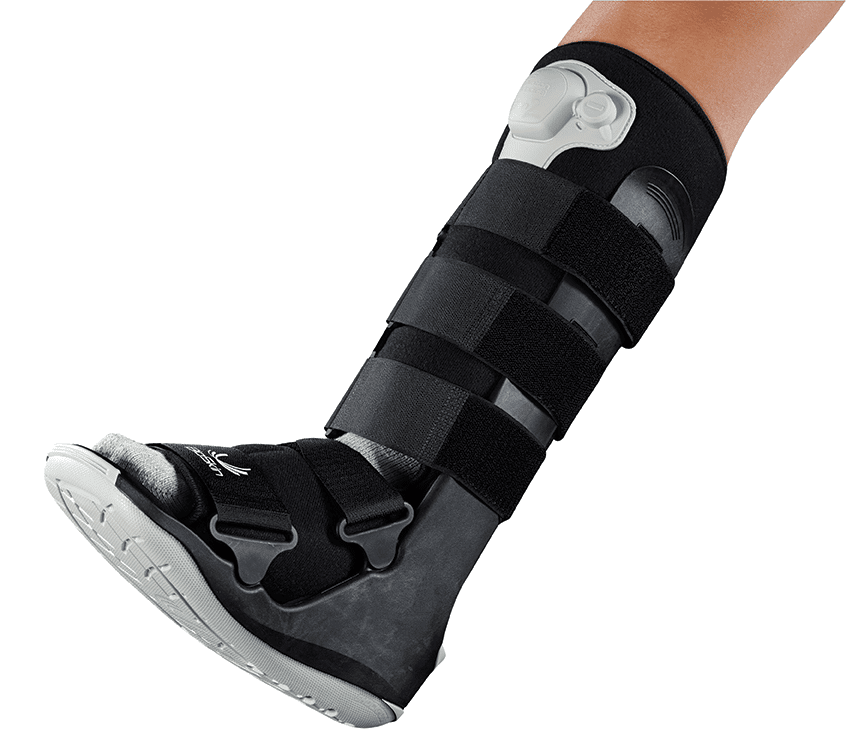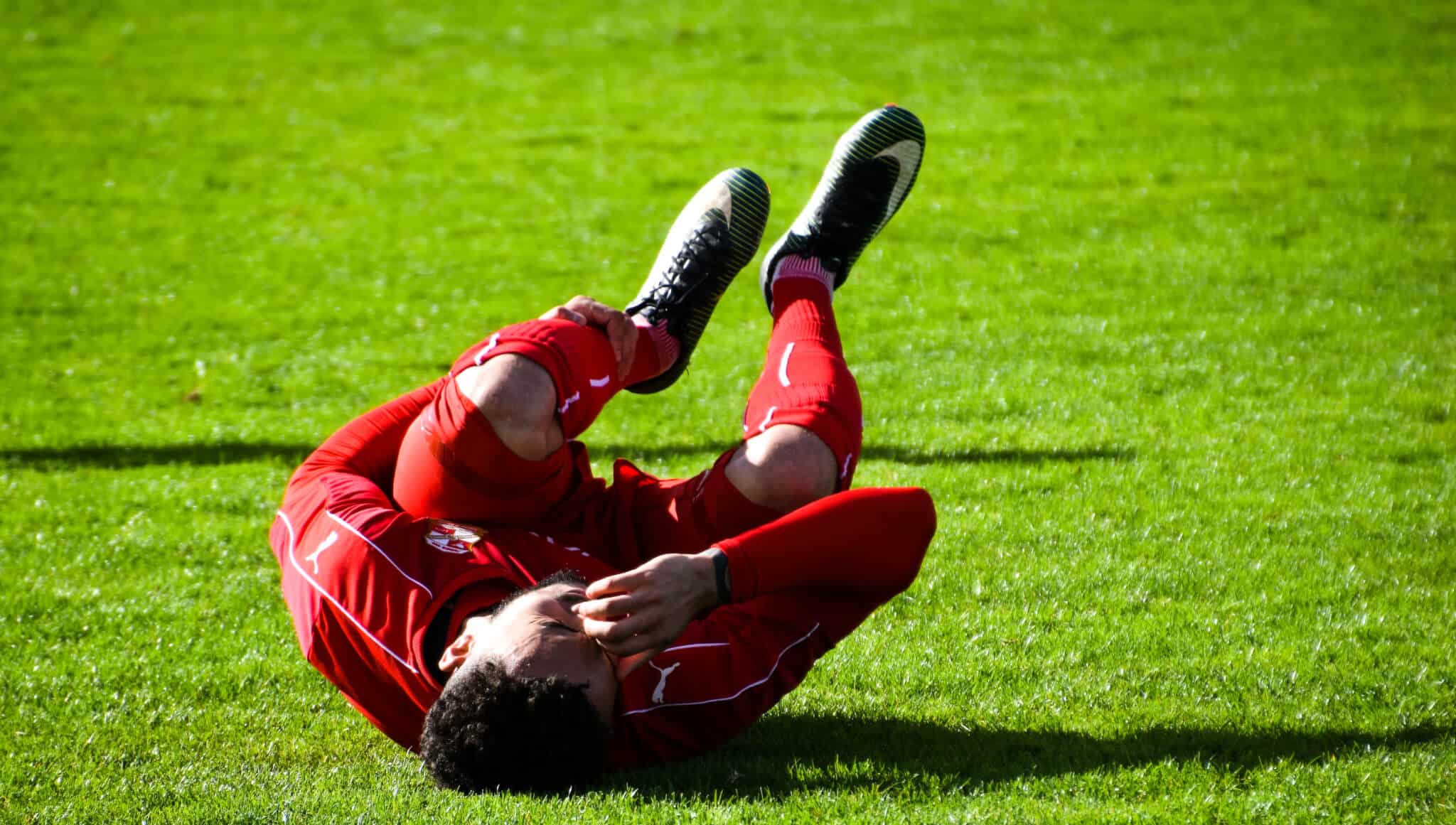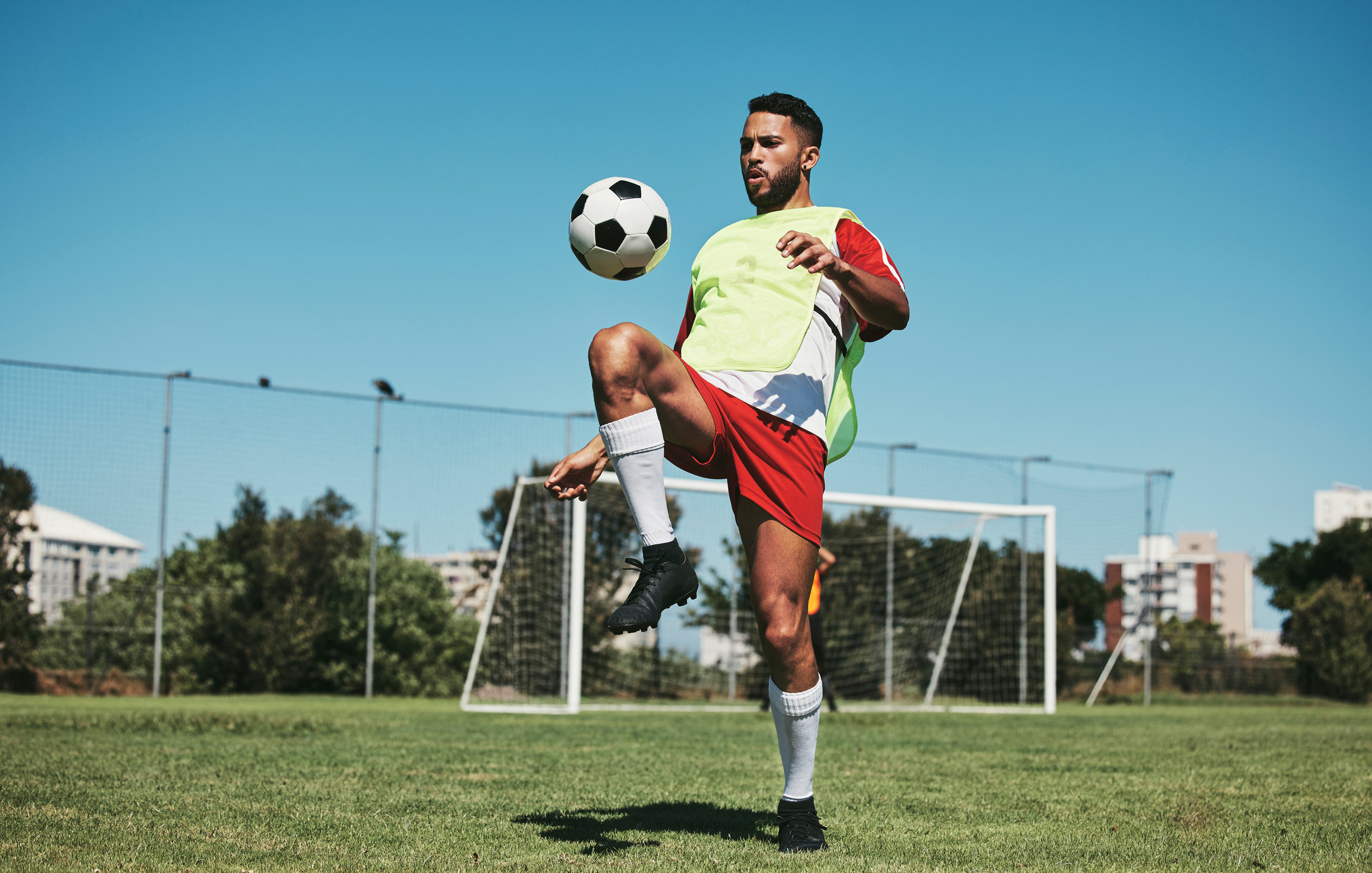4 Walking Boot Questions & Answers
A walking boot, also known as a walking brace, is a special type of medical footwear that doctors use to protect the foot and ankle areas after the patient has experienced an injury or after a surgical intervention in these areas. The primary goal of these shoes is to stabilize the foot and allow it to heal. It can also redistribute weight bearing pressure from one part of the foot to another. The reduced pressure gives an opportunity to heal more quickly. In this post we cover 4 of the most common walking boot questions from individuals who are preparing to start wearing this type of footwear, and provide some suggested answers.
The specific injuries for which a walking brace may be recommended include stress fractures or other fractures of the shin, foot & ankle. Health professionals can also effectively treat ankle sprains, injuries to the achilles or torn calf muscles using a walking boot. In addition, your doctor may suggest wearing one if you are suffering from shin splints.
Walking Boot Taxonomy
Walking boots can be either tall or short. The tall version can extend as far as the knee while the short boot may perhaps only reach halfway between the foot and knee. The tall version is more effective at immobilizing the lower foot muscles but may also be less comfortable to wear, particularly for shorter individuals. The shorter version provides greater wearing comfort and is generally easier to walk in, but will also generally provide less support and stabilization of the foot and lower ankle.
Another important classification of walking boots is pneumatic vs. non pneumatic. Pneumatic boots use compressed air to inflate the lining of the boot and provide additional support and compression to the foot. The effect of this compression is better control of any inflammation that may be present, as well as greater relief from pain.
Non pneumatic boots, on the other hand, do not use air and are more similar to a cast boot. They will not provide the compression and pain relief of their pneumatic counterparts but they are a more affordable option.
In most cases your doctor will decide which of these alternatives (pneumatic or non pneumatic, tall or short) is better for you in light of your particular injury and other circumstances.
Walking Boot Questions
Should I wear my walking boot to bed?
This is one of the most common walking boot questions among patients who are just starting to wear one. Although you should follow your doctor’s advice in any situation, the normal practice is to wear the boot while sleeping. However, loosening the straps that secure the boot will increase wearing comfort and allow you to sleep better.
Another good tip on a related subject is to sleep with pillows surrounding the boot in order to support the foot and avoid its displacement. It will also cushion the foot against any external impacts that may aggravate the injury.
If you wear the boot throughout the day and are concerned about keeping your bedclothes clean, you could surround your foot with an old pillow that you do not need to use anymore. This will provide support and protection while maintaining hygiene.
Can I drive while wearing my walking brace?
This is another commonly asked walking boot question. In general while wearing a walking boot on the left foot is generally permissible, studies have shown that wearing one (or other similar types of footwear) on the right foot can adversely affect driving performance. In particular, a 2016 study by the Journal of Foot & Ankle Surgery found that patients wearing a walking boot on the right foot exhibited significantly slower braking response times compared to individuals not wearing such a device. The study also found that patients wearing a walking boot tended to simultaneously press both accelerator and brake while driving. In general, the impaired neuromuscular control from which patients who are wearing a boot may be suffering will make it more difficult for them to quickly and accurately find the correct pedal in emergency situations.
Conclusion: although you should always follow the guidance of your doctor, the normal recommendation in response to this walking boot question is to avoid driving while wearing one if you would have to wear it on your right foot.
Should I use crutches while wearing the walking boot?
In some cases, doctors may advise their patients not to place any weight on the foot while wearing the shoe. These patients will need to continually use crutches to keep weight off the foot. In particular, if the patient will not be wearing the boot to bed, he or she should be careful to keep the crutches by the bedside and in easy reach. This will reduce the risk that the patient may accidentally place weight on the foot while getting into or getting up from bed.
Should I wear the boot while showering?
The priority should be to avoid putting weight on the unprotected foot at any time, as this could aggravate the injury. If you are not comfortable wearing the boot in the shower, one suggested approach for bathing is to remove the boot and sit on a chair in the shower in order to take the weight off the foot. Alternatively, if you would prefer to leave the boot on while showering, you could keep it dry by covering it with a plastic bag and using adhesive tape to create an airtight seal.
Conclusion
In this post, we have examined 4 common walking boot questions from patients preparing to wear this type of footwear for a period. Although the suggestions above will probably be appropriate for most of the patients who are about to start wearing a boot, we would (as always) suggest following your doctor’s advice in order to ensure that your treatment proceeds as intended.








I had a plantar fasciotomy on May 14th. I was put into a cam boot this week. My my doctor said I could stand in the shower without my boot and sleep without it. I’m trying really hard to walk in my boot without using a crutch or a cane. My question is how much weight should I actually be bearing on my foot, or should I always be using a cane or Walker for extra support. If I bear too much weight for too long I seem to suffer.
If you find that weight bearing without a cane or crutches is too painful, I would advise you to continue always using a cane or crutches until walking around without them is tolerable.
Thank you
Can I wear a compression stocking with the air cast?
Hello – we would advise you to check with your doctor first to ensure there are no contraindications to wearing compression stockings.
Having said that, however, you won’t compromise the performance of the boot. We don’t see any cons of wearing compression with the boot unless there is a health concern due to contraindications and (as we have said) that should be discussed with your doctor. Compression increases the circulation and blood flow and can help speed recovery times, so that would be an advantage. Thanks.
Why is the boot loose around the leg when I’m in bed, or lifting leg upwards to stretch? But when I’m walking around etc it’s nice and snug? Should I tighten it snuggly at night? Then loosen when I’m awake during the day?
Hello- Our answer to both your questions would be yes.
It’s most likely looser in bed because during the day the feet and legs can swell and when you are resting or elevating your legs, the blood finds it easier to circulate, thus reducing any swelling.
You could try tightening it at night if the boot is really loose. That will help to prevent you accidentally twisting or tweaking anything. You can then loosen the boot during the day to your comfort level.
Thanks.